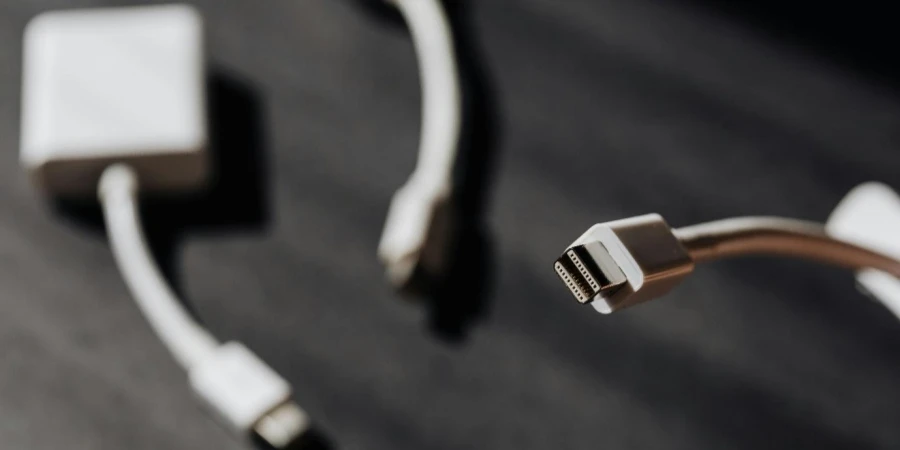Chargers and power adapters support the growing variety of gadgets available today. With advancements such as USB-C and wireless charging on the rise, the market is changing quickly to keep up with the need for more effective solutions. It’s crucial for professionals seeking power supplies to learn the latest trends so that their businesses stay informed about developments. This piece discusses changes in the market, innovative designs, and popular models fueling industry growth. Keeping up to date with these advancements is crucial to choosing state-of-the-art charging options.
Table of Contents
● Market overview: An evolving power landscape
● Key technology and design innovations shaping the charging market
● Top-selling models driving market trends
● Conclusion
Market overview: An evolving power landscape

Global charger market growth
The worldwide mobile charger market is expected to experience an increase from USD 36 billion in 2023 to around USD 55 billion by the end of year 2030, with an annual growth rate of 6%. This rise is primarily attributed to the surge in the usage of gadgets like smartphones and tablets that heavily depend on charging options to keep working smoothly. The escalation in device possession and the rising request for fast charging speeds has emphasized the necessity for chargers that offer both effectiveness and ease of use.
Key drivers of expansion
The growth in this market is greatly influenced by the increasing use of USB-C as a standard for charging across devices to address compatibility concerns and improve power delivery speed and efficiency. The shift towards eco-materials in chargers and the rise of wireless charging are also reshaping the industry landscape. Moreover, wireless chargers are slowly gaining ground compared to wired options because of their convenience in charging devices wirelessly. Industry reports indicate that the Asia Pacific region continues to experience high growth driven by demand from nations such as China and India. Meanwhile, North America and Europe play a significant role thanks to the swift adoption of fast-charging technologies.
Key technology and design innovations shaping the charging market
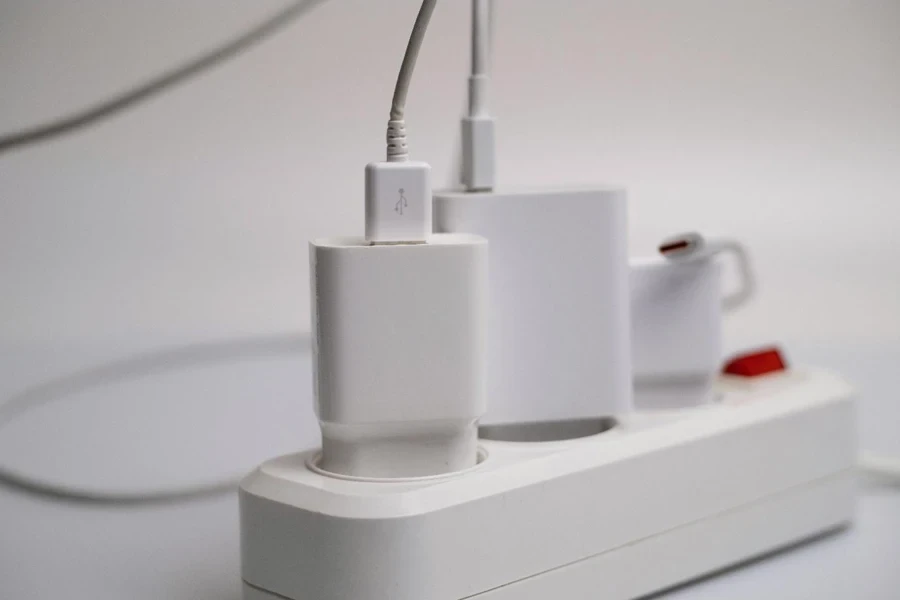
USB-C and GaN technology
USB-C has transformed charging by delivering up to 100W of power through Power Delivery (PD 3.0), enabling fast charging for various devices, including smartphones, tablets, and even power-hungry laptops. The USB-C connector can handle a current of 5 amps, making power transfer more effective than other USB versions. With the combination of GaN (Gallium Nitride) chargers, they have become noticeably smaller while being highly efficient. Gallium nitride (GaN) semiconductors enable chargers to function at elevated voltages and temperatures while minimizing heat dissipation and enhancing efficiency by up to 40%. GaNmchargers deliver high power levels to silicon-based chargers but in a significantly smaller size, making them well suited for compact and high-power portable applications.
Wireless charging advancements
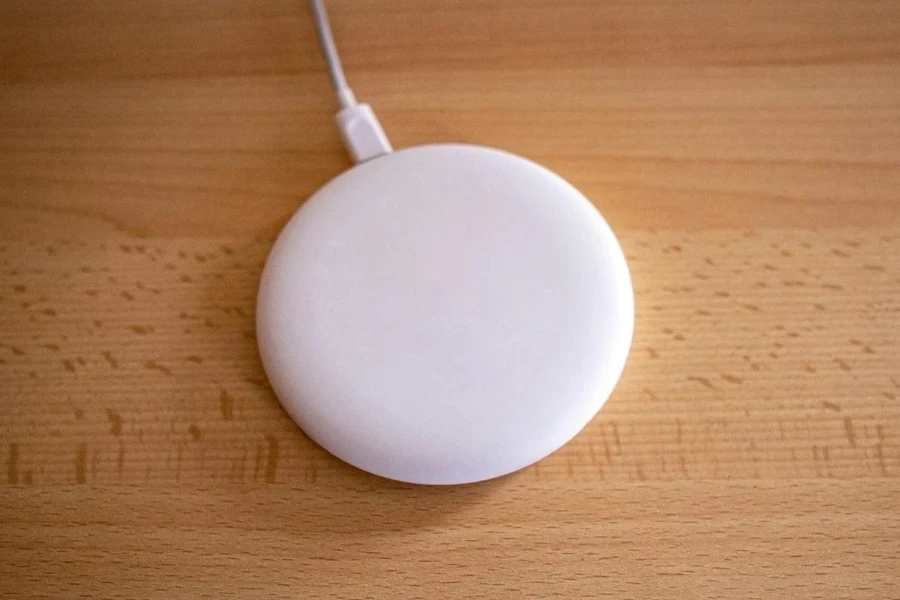
Qi wireless charging has advanced significantly in the years; the latest versions can provide up to 15 watts of power for smartphones and wearable devices. Some high-end models now feature dual coil technology that allows for flexibility in where you place your device while ensuring a consistent flow of power at all times. The introduction of inductive coupling technology has boosted the efficiency of charging. This innovation significantly helps reduce energy loss during the charging process. Thanks to advancements like coil alignment technologies that minimize heat production (a hurdle in charging), devices such as smartphones and wearables can now charge up more efficiently than ever. Multi-coil charging pads offer the convenience of charging many devices at the same time, which benefits both home and business use cases.
Smart charging and eco-friendly designs
Today, chargers are advanced with power allocation systems that can adjust output according to the needs of the device being charged dynamically. Port chargers now come equipped with intelligent load balancing circuits that can identify the power requirements of each connected device and provide up to 45 watts per port when needed to enhance both charging speed and energy efficiency. Many chargers now include charging algorithms that interact with the device’s battery system to safely increase current at the start of the charging process to reduce charging time by around 30%. Moreover, charger casings are increasingly made from plastics and recycled materials as part of efforts to promote sustainability and reduce electronic waste.
Safety features and innovations
Nowadays, chargers come with thermal control systems that use graphene heat dissipation layers to dissipate heat effectively and maintain high power levels without internally overheating. Chargers now include features like surge protection and temperature sensors to prevent problems like battery swelling during long charging sessions where high wattages are utilized. Moreover, modern charging technologies have evolved to include charging features that can identify the charging pattern for each gadget, thereby preserving battery life while ensuring efficient charging.
Top-selling models driving market trends
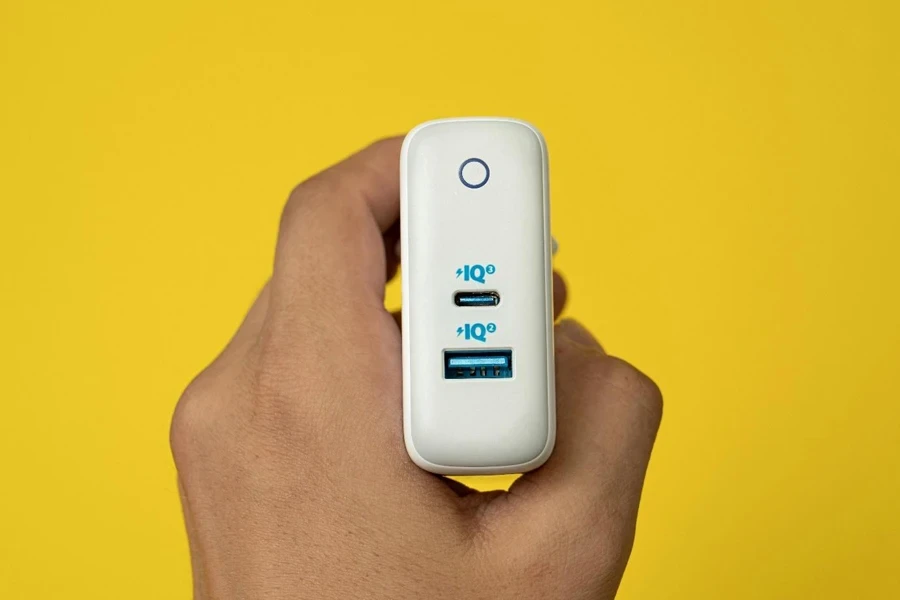
Anker PowerPort III Nano
The Anker PowerPort III Nano has become a top-seller due to its compact size and 20W fast-charging capabilities, making it a popular choice for smartphone users. Despite its small footprint, it uses USB-C Power Delivery (PD) technology to deliver 20W of power, enabling users to charge devices like the iPhone 13 to 50% in just 30 minutes. Its portability and reliability make it ideal for consumers who prioritize convenience without sacrificing charging speed. The charger’s compact design, which is 50% smaller than traditional iPhone chargers, also appeals to travelers and professionals who need lightweight accessories for on-the-go power.
Belkin Boost Charge Pro 45W Dual USB-C
The Belkin Boost Charge Pro 45W is a favorite among professionals who charge multiple devices simultaneously. Its dual USB-C ports can output up to 45W of power, making it suitable for charging larger devices like laptops, tablets, and even high-end smartphones. Each port can provide up to 25 watts and 20 watts individually when both are being utilized, simultaneously ensuring fast device charging rates. This device’s support for USB C Power Delivery 3.0 appeals to individuals who use power-hungry gadgets as it combines power efficiency and portability well.
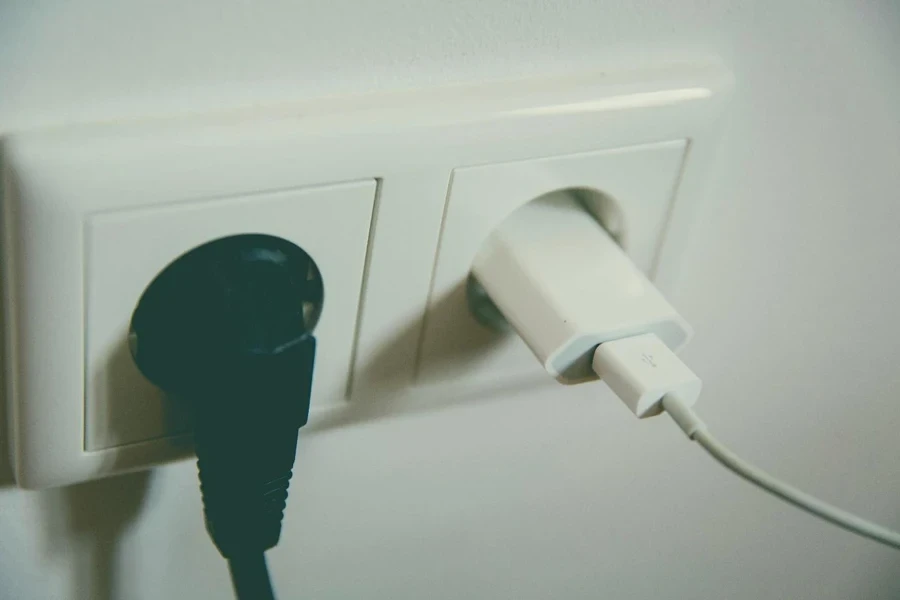
RAVPower PD 30W Dual Port Charger
The unique feature of the RAVPower PD 30-Watt Dual Port Charger is its versatility. It has USB-C and USB-A ports that enable users to charge two devices simultaneously. The 30-watt power delivery through the USB-C port charges smartphones and tablets and 12-watt through the USB-A port for smaller gadgets, like earbuds or fitness trackers. Users love this charger as it works well with newer and old devices with varying charging requirements.
Apple MagSafe Charger
Apple’s MagSafe Charger has gained significant popularity in the wireless charging category. Designed specifically for the iPhone 12 and newer models, it uses 15W magnetic alignment to deliver fast and efficient wireless charging. The easy-to-use snap function guarantees the device is consistently positioned correctly for efficient power transfer. This feature makes it a highly convenient option among the range of wireless chargers available. Additionally, its compatibility with AirPods and other Apple accessories has broadened its appeal, further driving its market presence.
Samsung Wireless Charger Duo
The Samsung Wireless Charger Duo is another leading product in the wireless category, supporting the simultaneous charging of two devices, such as a Galaxy smartphone and Galaxy Watch or earbuds. The charger delivers up to 12W of power for smartphones and 4.5W for wearables, allowing users to conveniently power multiple devices at once. With its Qi certification guaranteeing compatibility with Samsung devices and a wide array of other brand’s products, this charger offers users a versatile solution for simplifying their charging setups.
Anker PowerWave Pad
The Anker PowerWave Pad stands out as a budget-effective wireless charger option in the market, with the capacity to deliver up to 10 watts of power for rapid wireless charging needs across iOS and Android devices. This model guarantees cable-free charging for day-to-day usage with its anti-slip surface that keeps devices secure and the lightweight construction that makes it easy to carry around. It is perfect for users seeking a straightforward yet efficient wireless charging solution.
Conclusion
The market for chargers and adapters is set to grow as USB-C and wireless charging use continues to rise alongside the demand for eco designs by businesses and consumers seeking efficient and sustainable power solutions. Manufacturers are stepping up with innovations that not only improve performance but also offer greater convenience to users. Thanks to progress in charging technologies and a push to reduce waste (e-waste), the market is adapting to cater to the demands of our increasingly connected and mobile society. Businesses can explore charging solutions that match the evolving power landscape in this growth phase.
